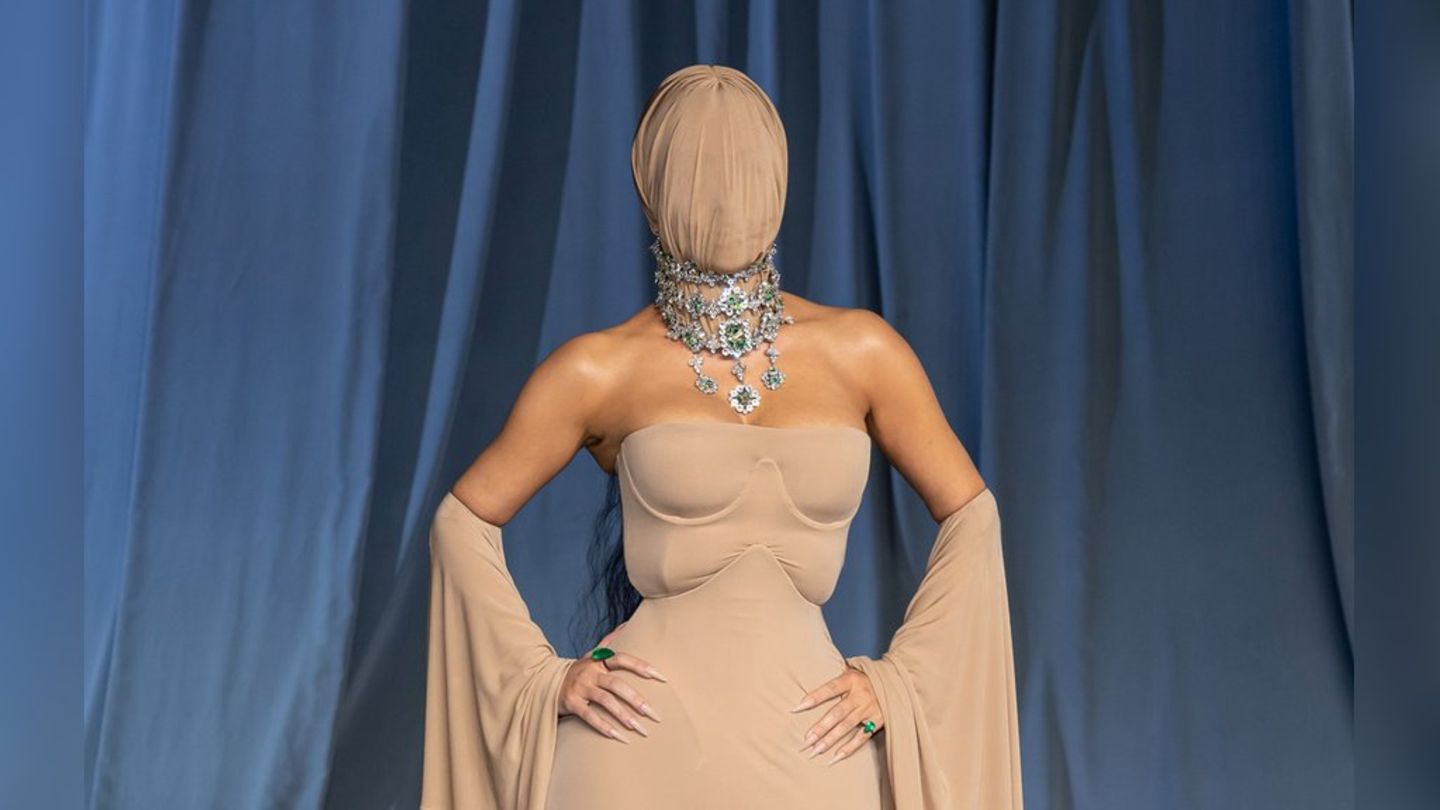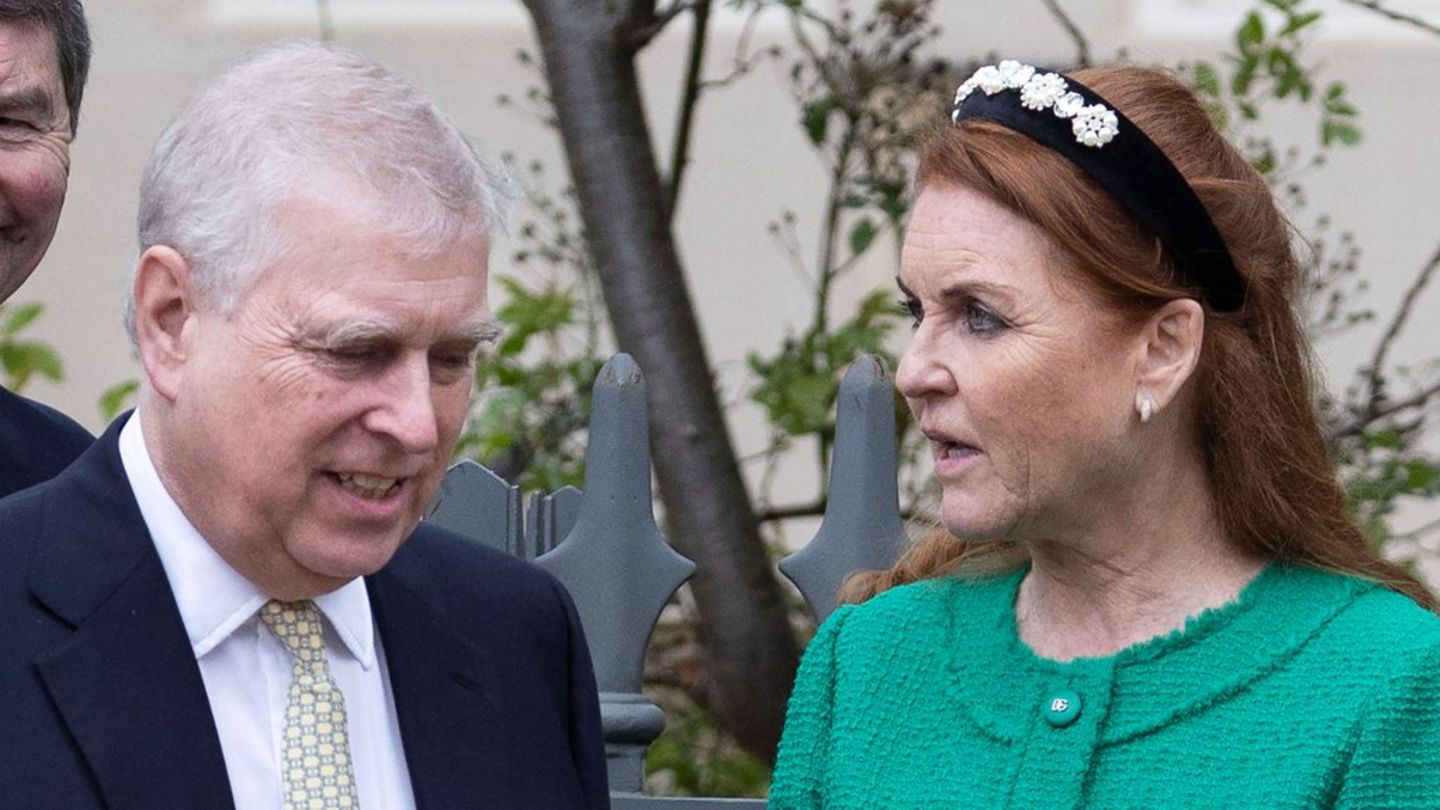A large number of personalities attended the ARFW sessions. Among them, Aníbal Pachano, Celeste Muriega, Christian Sancho, Paula Chaves, Agustina Cherri, Violeta Urtizberea, Stephie Demner, Brenda Gandini, Pía Slapka, Fabiana Araujo, Evelyn Sheild and Anamá Ferreira.
Day 1 – Opening
During the first day, they showed their “Luxury” designs: Benito Fernández, Marisa Marana, María Pryor and Jorge Rey. Then, the parades of Verónica de la Canal, Jean Pierre and Camila Romano followed.
Benito Fernández presented the “Amazónica” collection, with garments of genres that ranged from gauze, sequins, silk to a mix of textures such as lace and broderie. There were prints with black backgrounds, earth colors and red, orange and turquoise predominated. The prints were varied: they were seen from flowers to animal print.
Marisa Marana presented the “Gold” collection. The gold in different materials intervened by the black advanced in the skirts, peeked out in the petticoats and adorned the backs. The garments were composed of embroidered tulles in gold stones, taffetas and stones; and the black dresses, invaded by the golden whim.
María Pryor presented the “Spirit of the times” collection. Following in the footsteps of her universe, with fantasy freedom, in her romantic essence that is always there.
Jorge Rey presented the “Lapsus” collection, inspired by moments of mental lapses where time remains for error and failure, which makes everything more enriching and different. With the classic volume that characterizes Rey, he showed 3D textures and fault-like cuts with pronounced morphological dilation generating considerable points of tension. Rey surprised once again with vibrant and full colors.
Verónica de la Canal presented “Persuasion. Don’t let anyone tell you how to dress.” Inspired by the way in which human beings go through fashion, it is an invitation to be ourselves. She included designs with personality inspired by an artistic expression where each piece is unique, combining today’s textures with reminiscences of yesteryear. Pastel colors predominated as a whole: pink, light blue, orchid, yellow, white, green to identify ourselves and differentiate each personality through the silhouettes. Bias in some cases and with a lot of volume in others, handmade embroidery, corset. In each choice of these designs, we sought to give security, personality and that no one can persuade someone to be someone else that they are not.
Jean Pierre Joyeros, the firm of French origin, presented a preview of its collection. He showed the jewelery trends for this spring-summer in five trends, each with its own name. Enigma: exquisite black diamonds combined with white brilliants, in an original contrast for bracelets, rings and necklaces with a mysterious setting. Passion and Fire: rubies in original pieces that enhance precious stones. Nature: multicolored stones, an explosion of pink, yellow and light blue colors in short and long necklaces, combined with titanium, rhodium and black gold. The cognac and yellow bracelet is striking. A line of topaz, citrine and amethyst semi-precious stones. Capri: collection of hard stones such as malachite, lapis lazuli, carnelian, combined with gold and diamonds, the great fashion of this season, and a style full of pure energy and colors. Street Style: jewelery in white, pink and yellow gold, pieces that transmit an independent spirit, made for the informal, free woman, as it allows her to combine stones for everyday life).
Camila Romano presented more than 10 creations for independent, very feminine women who know what they want.
Matchday 2
On the 23rd, Maribi, from Córdoba; Francisco Ayala; Louis Palaces; Luis Guerra, from Santiago del Estero; Ana Tarrasanta, from Tres Arroyos; and Daniel Herrera.
Maribi presented two collections: haute couture called Valuviem and pret called Rainbow. Both represent the depths of the brand with an explosion of colors and textures that transmit 100% of Maribi. The garments transmit freedom, passion, effort, joy. Each of the garments was designed as a work of art, combining the best techniques of embroidery and intervention.
Francisco Ayala presented the “Impares” collection. With the participation of the National Folkloric Ballet and the Margarita Fernández Dance Studio at the opening, an immense dress was seen worn by a group of five dancers who explored the space and movement of this garment of unusual dimensions. For this collection, the designer rescues the silhouettes that he elaborated in his latest costume works. Such is the case of the “Imperial Silhouette” of the dress worn by Mariquita Sanchez de Thompson in 1813 when the verses of the National Anthem were sung for the first time, recreated for the Museo del Cabildo Nacional. This dress, with puff sleeves, cut below the bust, straight and with many pleats in the back in which it used original lace from the 19th century made in “Irish Lace” is the inspiration for other more modern versions combined with pants or with cutouts that They show a lot of skin.
In “Impares” Ayala continues her alliance with “Manos Andinas”, a project that combines textile design and fashion design. This collaboration is an exception in the National Industry and its objective is to revalue native natural fibers, proposing a one hundred percent Argentine fashion with triple impact.
She continues to work alongside designer Marisa Camargo in creating the taffetas, gauze, modified gauze, and native cotton jacquards that she used in this collection. Ayala created summer garments for men such as cotton shirts, linen bags, pants, skirts and wrap-around skirts made on a loom.
Another axis is the collaboration with textile artists: together with Susana Larrambebere she continues to explore the world of pre-Hispanic iconography and this time they incorporate an embroidery technique from India called “Kantha”. Genres painted by the plastic artist from Chaco Sergio Falcon were also seen, recreating the universe of the coast.
In this collection, works carried out with different trades were also shown (Pleats: you can see the black natural silk taffeta suit with a double bell-shaped skirt covered with fully pleated ruffles. Crystal embroidery: what we see in the Mapuche-origin guards embroidered in silver in a short black silk shantung dress.
Silk embroidery: present in the dress with gray petals embroidered in vegetal silk. Headdresses: inspired by the combs used by Creole ladies, they recreate this accessory with horsehair, lace and embroidery to accompany the different bridal gown proposals made by Fabiana Pojatti. Accessories: earrings, bracelets and necklaces were created exclusively for each costume by Maria Byzance).
Luis Guerra: young and talented designer who managed to establish himself in the society of Santiago del Estero. His criteria and creation led him to make productions outside the province. He considers himself eloquent, classic and sometimes daring. He graduated from the Roberto Piazza Institute in 2007 and since then he has not stopped with his passion for sewing. He did photo productions in Rome, Italy. He was able to do his own parades presenting his collection in Santiago del Estero. He was also part of magazines like Nubilis and Caras.
Ana Terrasanta presented the “Methanoia” collection, inspired by the Virgin of Saint Nicholas. With Mary’s embrace towards us, one thing she asks for is conversion, a resounding change of life, that is, a change from dark to light, changes in color, changes in volume. During the parade, there were also capes that represented the embrace of Mary.
Matchday 3
On the third day of ARFW they presented their Ocantos designs; Artisans, from Jujuy; Rosarito; and Vizzano, from Brazil.
Rosarito showed the “Indian Nazar” collection, with which she proposed to travel to the beloved world of color, brightness and magic that India gives us. With his designs, he invited people to combine and have fun, wearing what makes them feel the same passion with which these garments were created. “NAZAR means vision in India, it is where we see each other, we hope you will join us,” she said.
Vizzano, the Brazilian footwear brand, commercially represented in Argentina by Industrias Versato SA, showed how its fashion and sustainable DNA has conquered consumers in more than 95 countries. Bold, audacious and imposing shoes define the statement of the new aesthetic order that invades fashion. For the ARFW catwalk, Vizzano created a curatorship of trends matching products considered must-have fashionistas on social media, as well as exclusive materials and textures, sophisticated shapes and striking colors.
The catwalk was made up of five blocks (Alma Vizzano, with the brand’s consecrated constructions: scarpin, platform, casual sneakers, minimalist sandals and a contemporary reinterpretation of the slingback. Sexy is Back was the moment for vinyl and transparent footwear, offering more visible skin in the looks Maximalism, with the double platforms that provide new dimensions for sandals.
Euphoria from the 90s/2000s, now with a bold aesthetic, bringing updates in volumes, contours and heel heights, and sophisticated and contemporary finishes, highlighted by the satin and metallic look.
The grand finale was the moment of Glitzy, with a trend that moves between metallic colors and a holographic effect that dialogues with futurism, in addition to the super novelty of the gradient print texture, developed in the exclusive Napa Satín Berlin, which stars from sports cars to the famous Vizzano scarpins, revering optical and digital technology.
Matchday 4
On August 25, the day began with a dissertation headed by Fabián Medina Flores. Then, it was time for the Amsoar parades; Autino Mabby; Carina Spagiari, from Rafaela; and Iara.
Mabby Autino presented the “Dolls Dreams” collection in order to show her art through different stereotypes. Her inspiration was beauty, the explosion of color, what each of them transmits, the shapes and accessories that make people stand out, shine and express through her face.
Carina Spaggiari presented “Evolution”, where the new international trends for the spring-summer 22-23 season were seen. The designs were full of strong and intense colors, with a lot of shine and fabrics with a lot of volume. These were garments with character aimed at the evolved woman who lives today to the fullest.
Day 5 – Closing
The closing of ARFW was in charge of the designer Gustavo Pucheta, who presented “Boreal” SS_22_23. The collection was inspired by the course of an afternoon harvesting cotton. Cotton particles flying over the environment, sunbeams passing through them and giving off a range of colors, predominantly reddish, green and blue. This season the brand is committed to emphasizing tailoring and corsetry garments, proposing a sophisticated pret a couture.
Maintaining the characteristic of the extreme in its collections, this time it ranges from a mixture of bags with ultra-clean oversize silhouettes in crepes in saturated tones to natural linen bags with appliqués of cotton guipure in three-dimensional textures, passing through shiny corsets to reach full color sets of sequins.
The drama and maximalism characteristic of the brand, this time are explored from opposites, with full and strident colors together with rich textures in natural fabrics, used in jackets, pants, shirts and skirts.
Source: Ambito
David William is a talented author who has made a name for himself in the world of writing. He is a professional author who writes on a wide range of topics, from general interest to opinion news. David is currently working as a writer at 24 hours worlds where he brings his unique perspective and in-depth research to his articles, making them both informative and engaging.




